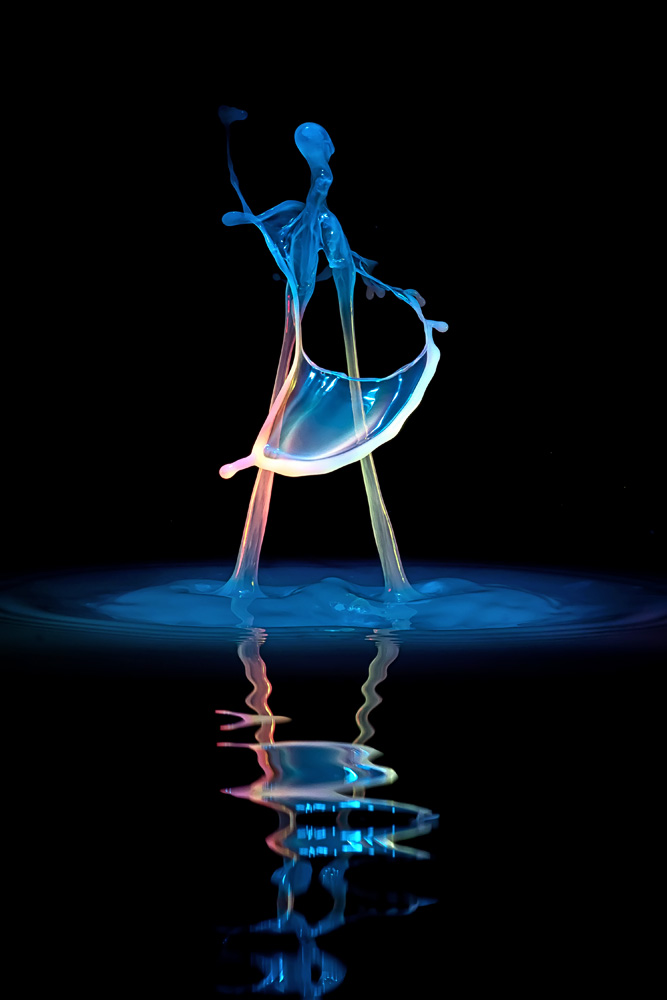Merging Water Droplets Come to Life in New Photos

New photographs capture multiple drops splashing in formations that look like doubled-stemmed mushrooms.
These "double pillar" droplets, as amateur photographer Markus Reugels has dubbed them, requires three water sources, perfectly timed to merge at the moment the shutter snaps.
Reugels, a floor installer in Marktsteinach, Germany, has long experimented with eye-catching water-droplet photography, recently attracting international attention for his "world in a drop of water" shots. In those shots, Reugels placed photos of orbs, from our moon and the Earth to Venus, behind a drop of water. The stunning photos reveal a refraction of the worlds within each droplet.
The double pillar photographs were a long time coming, Reugels told LiveScience.
"Nearly one year ago, I did some [droplet] collisions side-by-side," Reugel said. "I had the problem that the pillars attracted each other."
The merging water columns gave him an idea, inspiring him to create split-second sculptures of two side-by-side droplets and one from above, all merging into beautiful patterns. To create the photographs, Reugels invented a process in which he sets up two side-by-side valves and releases a drip of water from each. A third valve in the middle is timed to hit the two columns just as they "lean" into one another. Colored gels on the camera flash add otherworldly color to the photographs. [Gallery of Double Pillar Droplets]
Reugels plans to up the complexity of his photographs, bringing three and four water droplet pillars to a single point. He's successfully pulled three pillars of water together, but the shapes aren't elegant enough for his liking; LiveScience did get a peek at one, which would likely dazzle even the least artsy of us.
Sign up for the Live Science daily newsletter now
Get the world’s most fascinating discoveries delivered straight to your inbox.
"Maybe in the future I will understand the physics of the processes better to get better and smoother shapes," Reugels said.
You can follow LiveSciencesenior writer Stephanie Pappas on Twitter @sipappas. Follow LiveScience for the latest in science news and discoveries on Twitter @livescience and on Facebook.

Stephanie Pappas is a contributing writer for Live Science, covering topics ranging from geoscience to archaeology to the human brain and behavior. She was previously a senior writer for Live Science but is now a freelancer based in Denver, Colorado, and regularly contributes to Scientific American and The Monitor, the monthly magazine of the American Psychological Association. Stephanie received a bachelor's degree in psychology from the University of South Carolina and a graduate certificate in science communication from the University of California, Santa Cruz.









